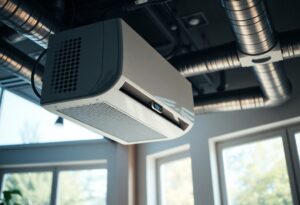What Is the Optimal Sleep Temperature? Tips for Better Sleep
Achieving good sleep is essential for overall health and well-being. One key factor that significantly impacts sleep quality is the temperature of your sleeping environment. But what is the optimum sleep temperature, and how can you find it? What if your partner prefers a different temperature? And what problems can arise if you’re not sleeping at your optimal sleep temperature? Let’s dive into these questions and offer some practical tips for better sleep.
Finding Your Optimal Sleep Temperature
The ideal sleep temperature can vary from person to person, but research suggests that the optimal room temperature for sleep is between 60 to 67 degrees Fahrenheit (15.6 to 19.4 degrees Celsius). However, individual preferences can fluctuate based on various factors such as age, metabolism, and personal comfort.
Steps to Determine Your Optimal Sleep Temperature
- Experiment with Different Temperatures:
- Start by setting your thermostat to the recommended range of 60 to 67 degrees Fahrenheit. Adjust the temperature up or down by one degree each night until you find a setting that feels most comfortable.
- Monitor Your Sleep Quality:
- Pay attention to how well you sleep at different temperatures. Keep a sleep journal to note any patterns, such as how quickly you fall asleep, how often you wake up during the night, and how rested you feel in the morning.
- Use Technology:
- Consider using a sleep tracker to gather data on your sleep patterns and quality at various temperatures. Many modern devices can provide insights into your sleep stages, heart rate, and movement.
- Consider Bedding and Pajamas:
- Your choice of bedding and sleepwear can also affect your sleep temperature. Opt for breathable, moisture-wicking fabrics that help regulate your body temperature.
Managing Different Sleep Temperature Preferences with Your Partner
When you and your partner have different optimal sleep temperatures, it can be challenging to find a compromise that ensures both of you sleep well. Here are some strategies to address this issue:
- Dual-Zone Temperature Control:
- Invest in a mattress with dual-zone temperature control or electric blankets that allow each side of the bed to be set to a different temperature. This way, you and your partner can each enjoy your preferred sleep environment.
- Separate Bedding:
- Use separate blankets or comforters. This approach allows each person to choose their preferred level of warmth without disturbing the other.
- Layering:
- Opt for a combination of light and heavy blankets so each person can layer according to their preference. This flexibility can help both partners achieve their ideal sleep temperature.
- Fans and Heating Pads:
- Use personal fans or heating pads to create a microclimate on each side of the bed. This can be an effective way to accommodate different temperature preferences without affecting the entire room.
Find and Post Jobs #hvacjobscenter
Problems Caused by Not Sleeping at Your Optimal Sleep Temperature
Sleeping at a temperature that is too hot or too cold can have several negative effects on your sleep quality and overall health:
- Interrupted Sleep:
- A room that is too warm can cause you to wake up frequently throughout the night, disrupting your sleep cycle and leaving you feeling tired and groggy in the morning.
- Difficulty Falling Asleep:
- If you’re too cold, you might find it hard to fall asleep as your body struggles to warm up. This can lead to longer periods of wakefulness and reduced overall sleep time.
- Decreased REM Sleep:
- REM (Rapid Eye Movement) sleep is crucial for cognitive function and emotional regulation. Extreme temperatures can reduce the amount of REM sleep you get, affecting your mood, memory, and cognitive abilities.
- Increased Stress and Anxiety:
- Poor sleep due to an uncomfortable temperature can contribute to increased stress and anxiety levels. Over time, chronic sleep deprivation can exacerbate mental health issues.
- Physical Discomfort:
- A hot room can lead to excessive sweating and dehydration, while a cold room can cause muscle stiffness and discomfort. Both conditions can result in physical ailments that further disrupt your sleep.
Tips for Maintaining the Optimal Sleep Temperature
- Adjust Your Thermostat:
- Program your thermostat to lower the temperature at night. Many modern thermostats allow you to set specific temperatures for different times of the day, ensuring a cooler environment when you sleep.
- Use Fans or Air Conditioning:
- Fans and air conditioning units can help regulate the temperature in your bedroom. A ceiling fan can improve air circulation, while an AC unit can provide consistent cooling.
- Choose the Right Bedding:
- Select bedding materials that suit the season. Use lighter, breathable fabrics in the summer and heavier, insulating materials in the winter.
- Dress Appropriately:
- Wear comfortable, temperature-appropriate sleepwear. Opt for lightweight, breathable fabrics in warmer months and cozy, insulating fabrics when it’s colder.
- Ventilate Your Room:
- Ensure your bedroom has good ventilation. Open windows when the weather is mild, or use an air purifier to keep the air fresh and cool.
Tip of the Day
Discover the optimal sleep temperature for a restful night! Learn tips and tricks to create the perfect sleep environment for better quality rest.
👉 Read now and unlock the secrets to a perfect night’s sleep. Improve your sleep quality and wake up refreshed every day!
Optimal Sleep Temperature: Conclusion
Finding and maintaining your optimal sleep temperature is essential for achieving restful, high-quality sleep. By experimenting with different temperatures, using appropriate bedding and sleepwear, and employing strategies to accommodate different preferences with your partner, you can create a sleep environment that promotes comfort and well-being. Remember, a good night’s sleep is crucial for your health, so take the time to find the temperature that works best for you. Now, go ahead and set your optimal sleep temperature.
Follow Us on Google Chrome
- To get started, switch to Google Chrome Browser
- Already on our site
- Top right, tap the 3 dots
- Bottom right, tap follow
- You are done.
Learn more and join our mailing list for updates.
This post has been written by Team HVAC Talk Magazine. Stay informed and connected with the latest in HVAC—join us for expert advice, troubleshooting tips, and news updates. Don’t miss out, follow us now! #HVACExperts #HVACTips #StayInformed #HVACProTalk








